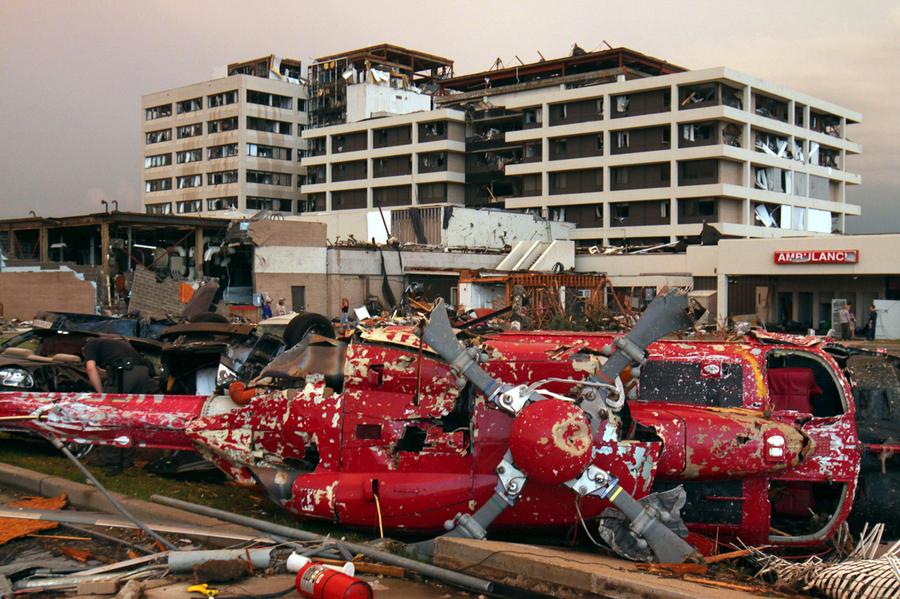

While tornadoes occur frequently in North America with over 1,000 on average per year in the United States 11, research on the mental health effects of tornadoes is less extensive than research on some other types of disasters (e.g., hurricanes). Overall, young people’s reactions to a disaster “generally parallel those of their parents in degree” 10. In a review of 160 disaster studies, Norris and colleagues 6 concluded that youth were at greater risk than adults for mental health problems following an event. In addition to adults, children and youth are also at risk for PTSD or depression following a disaster 6, 9. Major depression also may occur following a disaster affecting up to approximately 25% of directly exposed disaster survivors 8. Across studies, PTSD has been found to be greater for individuals with more severe exposure to a disaster 7. In a systematic review of natural disaster studies, Neria and colleagues 7 found that the prevalence of PTSD among individuals directly experiencing a disaster ranged from approximately 30% to 40%, while prevalence of PTSD in the general population where a disaster occurred ranged from approximately 5% to 10%. Research on disaster mental health has most frequently examined the association between disaster experience and posttraumatic stress disorder (PTSD) or PTSD symptoms 6.

2.īeyond the physical, environmental, and economic toll of the Joplin tornado, catastrophic disasters such as this event cause mental health problems for individuals who experience the disaster directly or live in the affected community. Overall, in just one afternoon, the 2011 Joplin tornado resulted in almost three times the average annual number of tornado fatalities for the entire U.S. The tornado struck the core of Joplin and destroyed approximately one-third of all houses as well as many businesses and schools 3, 4, resulting in $2.8 billion of economic losses 5. The tornado was rated an EF-5 on the Enhanced-Fujita Scale (the maximum rating) with wind speeds over 220 miles per hour 1, and resulted in a damage path that was 22.1 miles long and up to 1 mile wide 1. history struck Joplin, Missouri 1 killing 161 people and injuring approximately 1,150 individuals 2. On May 22, 2011, “one of the most devastating tornadoes” in U.S. Overall our results indicate that long-term (multi-year) community disaster mental health monitoring, assessment, referral, outreach, and services are needed following a major disaster like the 2011 Joplin tornado. At Survey 2 we assessed parent report of child (ages 4 to 17) strengths and difficulties and found that child difficulties were more frequent for younger children (ages 4 to 10) than older children (ages 11 to 17), and that parents reporting probable PTSD reported a greater frequency of children with borderline or abnormal difficulties.ĭiscussion. For both surveys, we observed low rates of mental health service utilization, and these rates were also low for participants reporting probable PTSD and current depression. Low levels of social support (assessed only at Survey 2) were related to more probable PTSD and current depression. Men and younger participants were more likely to report current depression at Survey 1. Less education and more tornado experience was generally related to greater likelihood of experiencing probable PTSD and current depression for both surveys. Probable PTSD relevance was 12.63% at Survey 1 and 26.74% at Survey 2, while current depression prevalence was 20.82% at Survey 1 and 13.33% at Survey 2. For Survey 2 we also assessed social support and parent report of child strengths and difficulties. For both surveys we assessed tornado experience, posttraumatic stress, depression, mental health service utilization, and sociodemographics. This study examined the mental health effects of this event through a random digit dialing sample (N = 380) of Joplin adults at approximately 6 months post-disaster (Survey 1) and a purposive convenience sample (N = 438) of Joplin adults at approximately 2.5 years post-disaster (Survey 2). On the deadliest tornado in the United States since 1947 struck Joplin, Missouri killing 161 people, injuring approximately 1,150 individuals, and causing approximately $2.8 billion in economic losses.


 0 kommentar(er)
0 kommentar(er)
